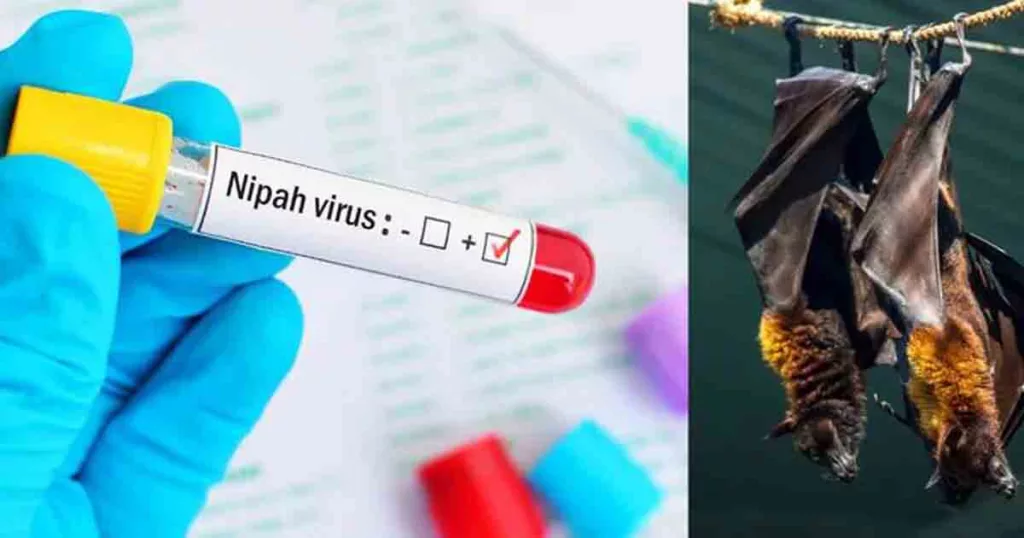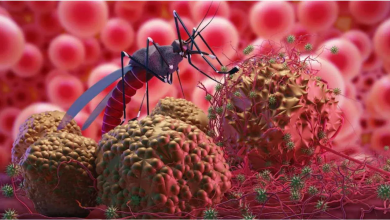Why is Kerala at High Risk for Nipah Virus Outbreaks?
Uncovering the Risks: Why Kerala Faces a Persistent Threat from Nipah Virus
Why is Kerala at High Risk for Nipah Virus Outbreaks?

Kerala, a lush and vibrant state located in southern India, has become synonymous with both natural beauty and medical challenges. In recent years, the state has faced a recurrent threat from the Nipah virus, a deadly pathogen transmitted from animals to humans. The frequent outbreaks in Kerala have raised concerns and prompted extensive studies to understand why this region is particularly vulnerable. This blog post delves into the reasons behind Kerala’s high risk for Nipah virus outbreaks, exploring the interplay of ecological, social, and healthcare factors that contribute to this persistent threat.
Understanding the Nipah Virus
The Nipah virus (NiV) is a zoonotic pathogen, meaning it is transmitted from animals to humans. It was first identified in 1998 during an outbreak among pig farmers in Malaysia and Singapore. The virus has since caused numerous outbreaks in South and Southeast Asia, with high fatality rates. Nipah virus is classified as a priority pathogen by the World Health Organization (WHO) due to its potential to cause severe disease and its lack of a vaccine or specific treatment.
Ecological Factors: The Role of Fruit Bats
One of the primary reasons Kerala is at high risk for Nipah virus outbreaks is its rich biodiversity, particularly its population of fruit bats, which are the natural reservoir for the virus. These bats, specifically the Pteropus genus, harbor the virus without showing symptoms. The dense forests and abundant fruit trees in Kerala provide an ideal habitat for these bats, bringing them into close proximity with human populations.
Agricultural Practices and Livestock Management
Kerala’s agricultural practices also contribute to the risk of Nipah virus transmission. The state’s farming community often practices mixed farming, where crops and livestock, including pigs, are raised in close quarters. This proximity can facilitate the spillover of the virus from bats to livestock and then to humans. During the initial outbreak in Malaysia, pigs played a crucial intermediary role in transmitting the virus from bats to humans. While similar intermediate hosts have not been conclusively identified in Kerala, the potential for such transmission remains a concern.
Human-Animal Interaction and Urbanization
Rapid urbanization and deforestation in Kerala have increased human-animal interactions, creating more opportunities for zoonotic diseases to emerge. As natural habitats are encroached upon by expanding urban areas, fruit bats and other wildlife are forced to come into closer contact with human settlements. This increased interaction heightens the risk of virus spillover events, where pathogens jump from animals to humans.
Healthcare Infrastructure and Surveillance
Kerala boasts one of the best healthcare systems in India, which paradoxically both helps and hinders the management of Nipah virus outbreaks. On one hand, the state’s robust healthcare infrastructure enables quick detection, reporting, and response to outbreaks, limiting the spread of the virus. On the other hand, the efficient identification of cases might give the impression of frequent outbreaks, as other regions with less developed healthcare systems might underreport similar cases.
Cultural Practices and Socioeconomic Factors
Cultural practices and socioeconomic factors also play a role in the transmission dynamics of the Nipah virus in Kerala. Traditional practices, such as the consumption of fresh date palm sap, can inadvertently expose individuals to bat secretions that may contain the virus. Additionally, socioeconomic factors, including high population density and mobility, can facilitate the rapid spread of the virus once it enters the human population.
Public Awareness and Community Engagement
Public awareness and community engagement are crucial in managing and preventing Nipah virus outbreaks. Kerala has made significant strides in educating its population about the risks and preventive measures associated with the virus. Public health campaigns and community involvement have been pivotal in controlling past outbreaks. However, continuous efforts are needed to maintain high levels of awareness and preparedness, especially in rural and underserved areas.
The Role of Climate Change
Climate change is another factor that could potentially increase the risk of Nipah virus outbreaks in Kerala. Changes in temperature, rainfall patterns, and extreme weather events can alter the habitats and behaviors of wildlife, including fruit bats. These changes can influence the distribution and abundance of bats and other wildlife, potentially increasing the chances of human-animal interactions and virus spillover events.
Case Studies of Previous Outbreaks
Analyzing previous Nipah virus outbreaks in Kerala provides valuable insights into the state’s vulnerability and response strategies. The first major outbreak in Kerala occurred in 2018, claiming 17 lives. The state’s health authorities swiftly implemented containment measures, including quarantine, contact tracing, and public awareness campaigns. Despite the high fatality rate, the outbreak was contained within a few weeks, demonstrating the effectiveness of Kerala’s healthcare system and public health response.
In subsequent years, Kerala has faced additional outbreaks, each time improving its response mechanisms. These experiences have highlighted the importance of rapid detection, timely intervention, and community involvement in managing Nipah virus outbreaks.
Research and Development Efforts
Ongoing research and development efforts are crucial in understanding the Nipah virus and developing effective preventive measures. Scientists are studying the ecology of fruit bats, virus transmission dynamics, and potential intermediate hosts to gain a deeper understanding of how outbreaks occur and spread. Efforts are also underway to develop vaccines and antiviral treatments for Nipah virus, which could significantly reduce the impact of future outbreaks.
International Collaboration and Support
International collaboration and support are vital in addressing the threat of Nipah virus outbreaks in Kerala and beyond. The WHO and other global health organizations play a crucial role in coordinating efforts, sharing knowledge, and providing resources to countries at risk. Collaborative research initiatives, funding for public health infrastructure, and capacity-building programs are essential in enhancing the ability of Kerala and other regions to prevent and respond to Nipah virus outbreaks.
The Way Forward: Strengthening Preparedness and Resilience
To reduce the risk of Nipah virus outbreaks in Kerala, a multi-faceted approach is needed. This includes:
- Enhanced Surveillance and Early Detection: Strengthening surveillance systems to detect Nipah virus cases early and monitor potential hotspots can help in implementing timely interventions and preventing widespread outbreaks.
- Public Awareness and Education: Continuous public health campaigns to educate communities about the risks of Nipah virus, safe practices, and the importance of reporting symptoms can empower individuals to take preventive measures.
- Ecological Conservation: Protecting and conserving natural habitats can reduce human-animal interactions and the risk of zoonotic spillover events. Sustainable land use practices and reforestation efforts can help maintain ecological balance. Just as we know Why is the ‘Brain-Eating’ Amoeba Dangerous?
- Research and Development: Continued investment in research to understand the virus, its transmission dynamics, and potential treatments or vaccines is crucial in mitigating the impact of future outbreaks.
- Healthcare Infrastructure: Strengthening healthcare infrastructure, especially in rural and remote areas, can improve the capacity to respond to outbreaks and provide timely medical care to affected individuals.
- International Collaboration: Fostering international collaboration and partnerships can enhance knowledge sharing, resource mobilization, and coordinated response efforts to address the global threat of Nipah virus.
Conclusion
Kerala’s high risk for Nipah virus outbreaks is a complex interplay of ecological, social, and healthcare factors. The state’s rich biodiversity, agricultural practices, human-animal interactions, and robust healthcare system contribute to both the vulnerability and resilience against the virus. By understanding these factors and implementing comprehensive strategies, Kerala can strengthen its preparedness and resilience, reducing the impact of future outbreaks. The ongoing efforts in research, public health, and international collaboration are essential in addressing the threat of Nipah virus and safeguarding the health and well-being of communities in Kerala and beyond.




